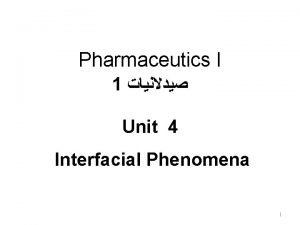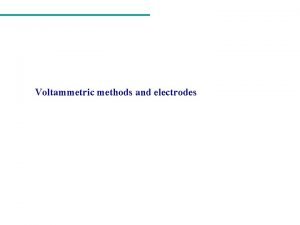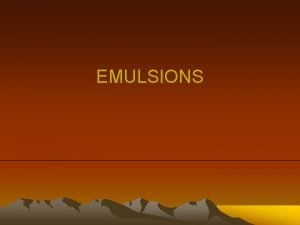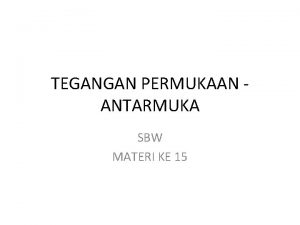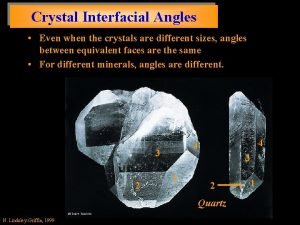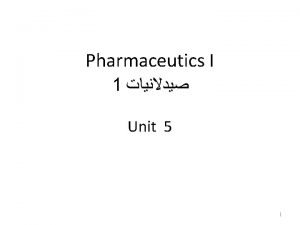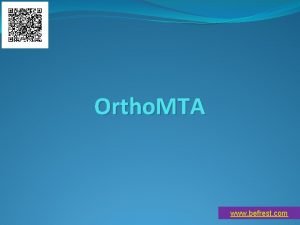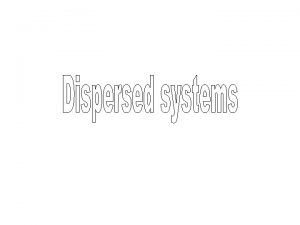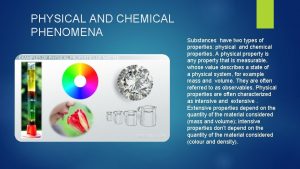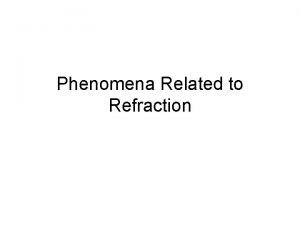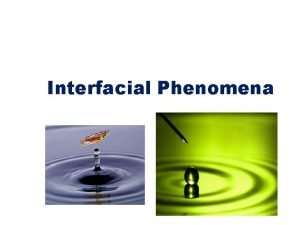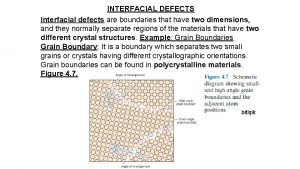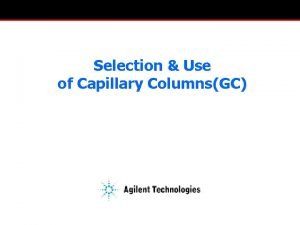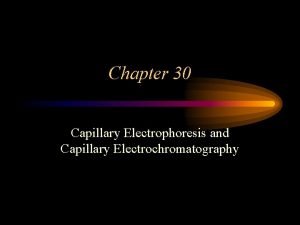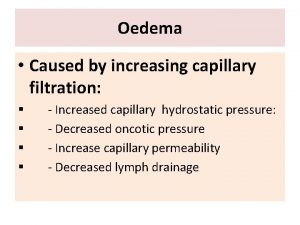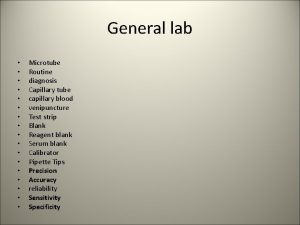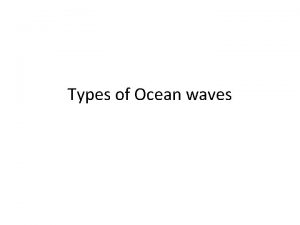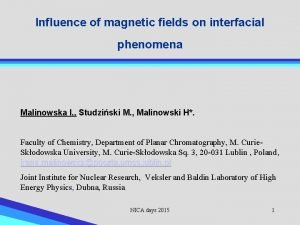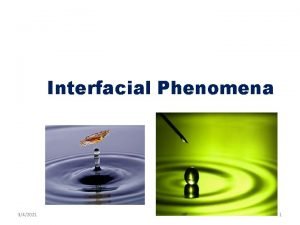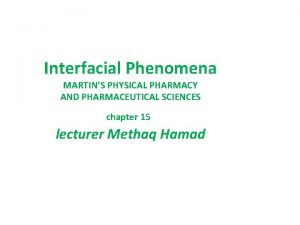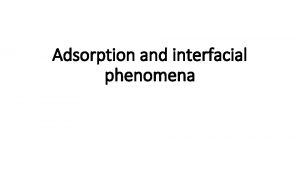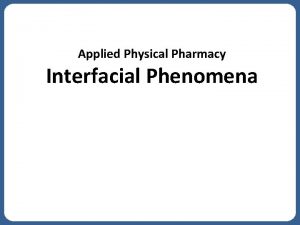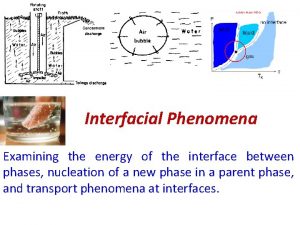Capillary Phenomena 5 Laws of Interfacial Engineering Ger


















- Slides: 18

Capillary Phenomena 5 Laws of Interfacial Engineering Ger Koper Interfacial Engineering, 5 Laws

Introduction Dispersions are often not (thermodynamically) stable Solvent quality Surface free energy • Solubility parameters • Coarsening: minimize area • Polarity (if dissociated) • 5 Laws of Interfacial Engineering • Despite entropy gain upon dispersion 01/03/2021 Interfacial Engineering, 5 Laws 2

Surface free energy: experimental evidence Pulling a needle from a liquid surface Increase of surface area requires work • Here 01/03/2021 so Interfacial Engineering, 5 Laws 3

Surface free energy: experimental evidence Pulling a needle from a liquid surface • Example: – for water = 73 m. Jm-2 01/03/2021 Interfacial Engineering, 5 Laws 4

Surface free energy: concept • Molecular view – Molecule in bulk ? – Molecule at surface – Surface excess energy 01/03/2021 Interfacial Engineering, 5 Laws 5

Surface free energy: concept • Example for carbon tetrachloride 01/03/2021 Interfacial Engineering, 5 Laws 6

5 Laws of Interfacial Engineering Hamaker Young Laplace Kelvin Gibbs 01/03/2021 Interfacial Engineering, 5 Laws 7

Hamaker: van der Waals forces • Work of cohesion – Van der Waals interaction between planar surfaces – Relation with surface tension 01/03/2021 Interfacial Engineering, 5 Laws 8

Hamaker: van der Waals forces • Work of cohesion – Example • carbon tetrachloride • d = 0. 54 nm and = 0. 03 J/m 2 01/03/2021 Interfacial Engineering, 5 Laws 9

Young: contact angle and wetting no wetting partial wetting complete wetting – Young's law LV • Force balance • wetting: 01/03/2021 SV Interfacial Engineering, 5 Laws SL 10

Laplace's equation pout pin 01/03/2021 Interfacial Engineering, 5 Laws 11

Laplace's equation pout pin – Laplace's equation – Application: capillary rise 2 a h 01/03/2021 Interfacial Engineering, 5 Laws 12

Laplace's equation pout pin Capillary rise 2 a • Technical applications: – porosimetry – Washburn equation: capillary flow h • Example: 01/03/2021 Interfacial Engineering, 5 Laws 13

Kelvin: nucleation • Homogeneous nucleation – Work to create droplet water drop at 100 o. C and p/po = 3 – Kelvin relation: unstable equilibrium 01/03/2021 Interfacial Engineering, 5 Laws 14

Kelvin: nucleation – Formation rate of embryonic nuclei water drops at 0 o. C • Heterogeneous nucleation – relation with wetting: contact angle • when contact angle vanishes: spontaneous nucleation. 01/03/2021 Interfacial Engineering, 5 Laws 15

Gibbs: surface excess • Surfactants – amphiphilic molecules: both hydrophobic and hydrophilic parts • soap, detergent, emulsifier • hydrophilic head group, hydrophobic tail – typically reside at interfaces 01/03/2021 or form micelles (above cmc) Interfacial Engineering, 5 Laws 16

Gibbs: surface excess • Example: SDS in water 01/03/2021 Interfacial Engineering, 5 Laws 17

5 Laws of Interfacial Engineering • Surface: excess free energy • 5 Laws of Interfacial Engineering 5 tricks of nature to get rid of it • Each trick has its own time scale determines preferred process 01/03/2021 Hamaker flocculation Laplace emulsification foam stability Kelvin nucleation Ostwald ripening Young wetting adhesion Gibbs colloidal stabilization Interfacial Engineering, 5 Laws 18
 Surface and interfacial phenomena
Surface and interfacial phenomena Interfacial porn
Interfacial porn Interfacial method in electrochemistry
Interfacial method in electrochemistry Wet gum method of emulsion
Wet gum method of emulsion Pengertian dari tegangan antarmuka adalah ....
Pengertian dari tegangan antarmuka adalah .... Talc luster
Talc luster Is cotton candy anisotropic
Is cotton candy anisotropic List of suspending agents
List of suspending agents Ortho mta
Ortho mta Interfacial properties of suspended particles ppt
Interfacial properties of suspended particles ppt Charles de secondat
Charles de secondat Moose monikko
Moose monikko Some natural phenomena class 8 ppt download
Some natural phenomena class 8 ppt download Physical and chemical phenomena
Physical and chemical phenomena Refraction phenomena
Refraction phenomena Observable phenomena psychology
Observable phenomena psychology Contemporary phenomenon examples
Contemporary phenomenon examples Reference phenomena in nlp
Reference phenomena in nlp Reference phenomenon in nlp
Reference phenomenon in nlp
